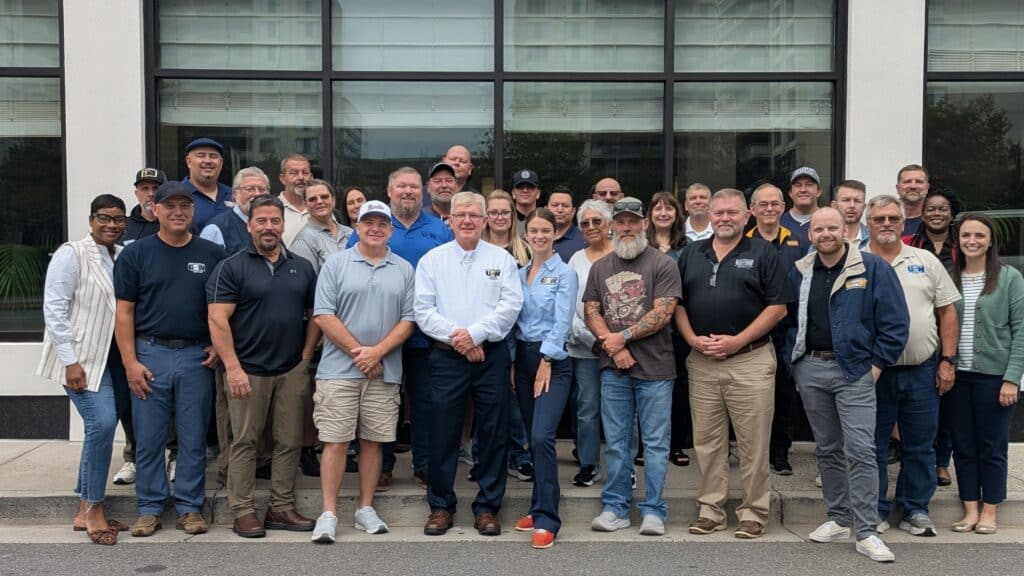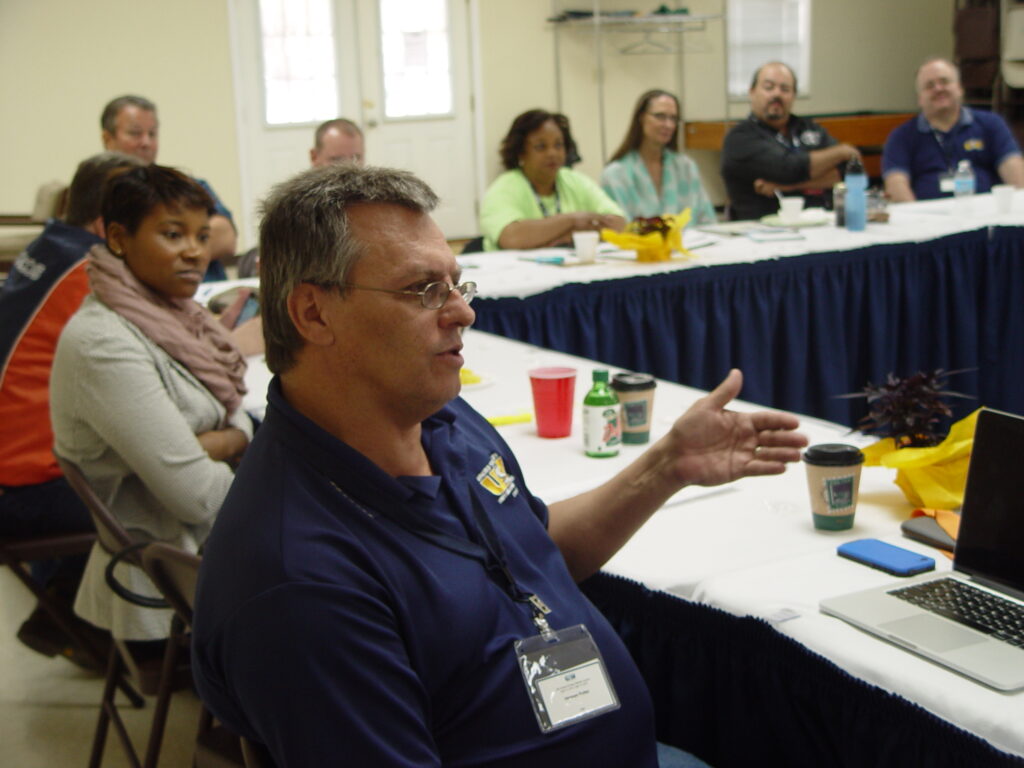Government Shutdown Impacts Atomic Energy Workers Council Meeting
At the USW Atomic Energy Workers Council (AEWC) meeting in Washington, D.C. October 1-3, the federal government shutdown prevented Department of Energy (DOE) officials from attending the meeting and addressing concerns raised by workers from their sites.
While the DOE staffers were furloughed, top management was told they could not attend meetings outside the office.
Although the shutdown changed the meeting agenda, it gave the atomic workers time to discuss the relationship between the DOE and the contractors, nuclear health and safety issues and concerns at their facilities. They also heard a presentation on how to do information requests.
“DOE drives the contractors,” Local 689 President Herman Potter said. “The contractors will do anything DOE tells them to do because money is involved.”
International Vice President and Assistant to the President Kip Phillips said there is an “incestuous relationship” between the contractors and DOE.
“DOE people go to work for the people they regulate when they retire,” he said.
“It’s hard for the local unions to stand up against their contractor and the federal government. I encourage you to work together. Hopefully with the Moniz (Secretary of Energy Ernest Moniz) administration we’ll see some changes,” he added.
To address contractor non-accountability, International Vice President-at Large Carol Landry, who heads the atomic council, formed a team of staffers to help resolve the issues with contractors and DOE.
“We want contractors to know the locals aren’t on their own,” she said. “DOE and the contractors point fingers at each other. To date, the contractors and DOE refuse to sit down together.
“They shouldn’t wait till someone dies to do what they’re supposed to do,” she added.
David Cassady of the USW Health, Safety & Environment department said: “10 CFR 851regulatory requirements were written to protect workers from unsafe practices, policies and procedures that diminish workplace safety and health. Unfortunately DOE chooses only to enforce these regulations under 10 CFR 851when there is a catastrophe or a fatality happens in the workplace. When workers are required to get seriously hurt or die before they are protected by 10 CFR 851 how effective can the protections afforded under this regulation be?”
DOE’s 10 CFR 851.20 health and safety rules require the contractor to assign responsibility for its health and safety programs and to make workers aware of these assignments. “Yet, the union still cannot get a reporting structure from DOE,” Cassady added.
Several sites reported their contractors use fitness-for-duty programs to terminate employees who are older or report injuries.
“Fitness-for-duty dampens employee incentive to report accidents and near misses because of fear of losing their job,” Phillips said.
Secretary Moniz requested USW wait to address issues until a labor liaison is appointed by the department. An announcement was expected within two weeks after the AEWC meeting.
After years of working with the AEWC and dealing with the DOE bureaucracy and government leaders and officials, Phillips announced he will retire.
“It has been an honor and privilege to work with you all,” he told the council.
By clicking Sign Up you're confirming that you agree with our Terms and Conditions.
Recent News Articles
Want to Learn More?
See how the USW is making a real difference in our communities and our workplaces.

